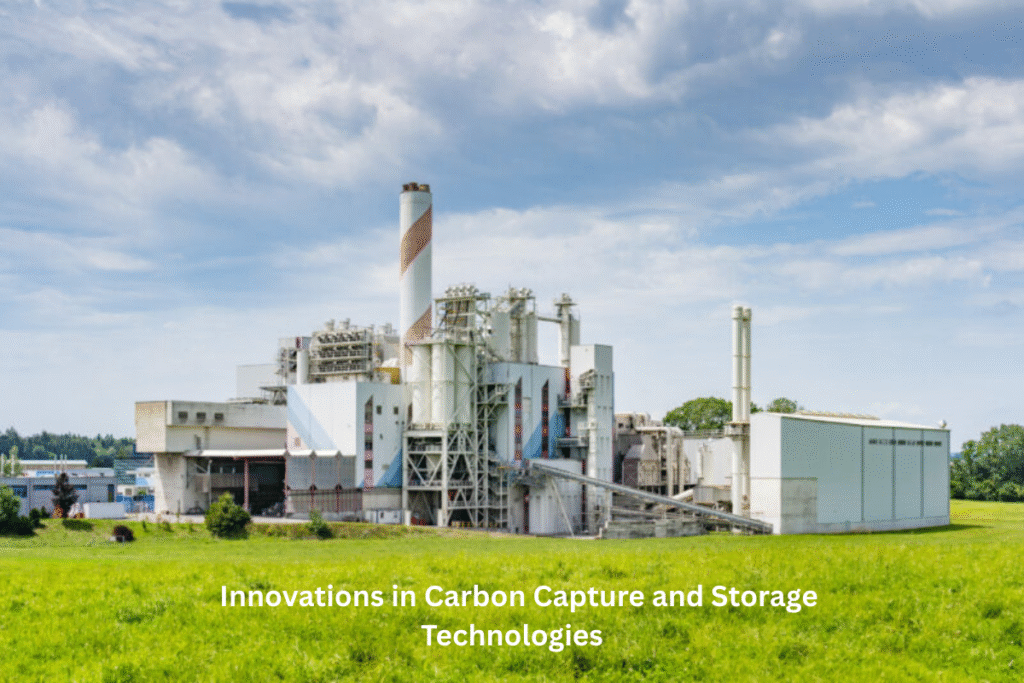
As the world grapples with the urgency of addressing climate change, carbon capture and storage (CCS) technologies have emerged as a vital solution to reduce greenhouse gas emissions. CCS offers the ability to capture carbon dioxide (CO2) emissions at their source, preventing them from entering the atmosphere. This article explores the latest innovations in carbon capture and storage technologies, their potential, and how they can contribute to a sustainable future.
1. Understanding Carbon Capture and Storage (CCS)
Carbon capture and storage (CCS) is a process that involves capturing CO2 emissions from sources like power plants or industrial processes, transporting the captured CO2, and storing it underground in geological formations. The goal of CCS is to prevent CO2 from being released into the atmosphere, thereby mitigating its contribution to global warming.
CCS has three main stages:
- Capture: CO2 is separated from other gases at the point of emission.
- Transportation: The captured CO2 is transported, usually via pipelines, to a storage site.
- Storage: The CO2 is injected into deep underground geological formations where it can be stored safely.
2. Innovative Carbon Capture Technologies
Recent advancements in carbon capture technologies have improved efficiency, scalability, and cost-effectiveness. Below are some of the latest innovations:
a. Direct Air Capture (DAC)
Direct Air Capture (DAC) is a groundbreaking technology that captures CO2 directly from the ambient air, rather than from specific emission sources. This innovation holds immense potential because it allows for the removal of CO2 from the atmosphere, making it possible to reduce existing concentrations of greenhouse gases.
How it Works:
DAC systems use chemical processes to absorb CO2 from the air. Once captured, the CO2 can be stored underground or used in various industrial applications, such as producing synthetic fuels or chemicals.
b. Post-Combustion Capture
Post-combustion capture is one of the most widely used methods for capturing CO2 from power plants and industrial processes. It involves capturing CO2 after the fuel has been burned, using solvents or solid sorbents to absorb the gas.
Recent Innovations:
- Advanced Solvents: New solvents have been developed to increase the efficiency of CO2 capture and reduce energy consumption during the process.
- Membrane Technology: Membranes that selectively separate CO2 from other gases are being designed to improve the efficiency and reduce the operational costs of post-combustion capture.
c. Oxyfuel Combustion
Oxyfuel combustion involves burning fossil fuels in an environment with pure oxygen instead of air, which results in a flue gas composed mostly of CO2 and water vapor. The CO2 can then be easily captured and stored.
Innovations in Oxyfuel Combustion:
- Improved Combustion Systems: Advances in oxyfuel combustion systems have made the process more efficient and cost-effective, making it a more viable option for large-scale deployment in industries.
d. Bioenergy with Carbon Capture and Storage (BECCS)
Bioenergy with Carbon Capture and Storage (BECCS) combines bioenergy production with CCS. Biomass, such as wood, agricultural waste, or algae, is burned to generate energy, and the CO2 emissions produced during the process are captured and stored.
Potential and Innovations:
- Increased Biomass Efficiency: Research is focusing on improving the efficiency of biomass energy production and CO2 capture to enhance the scalability of BECCS.
- Dual-Use Biomass: Utilizing waste biomass not only for energy production but also for carbon capture has the potential to further reduce emissions in sectors like agriculture and waste management.
3. Advancements in CO2 Storage Techniques
Once captured, CO2 needs to be stored in a safe, permanent location to prevent it from re-entering the atmosphere. Innovative storage techniques are making it possible to store CO2 more securely and efficiently.
a. Geological Storage
Geological storage involves injecting CO2 into deep underground rock formations, such as depleted oil and gas reservoirs, deep saline aquifers, or unmineable coal seams. Research has focused on improving the monitoring of CO2 storage sites to ensure long-term containment.
Innovations in Geological Storage:
- Improved Monitoring: New sensors and technologies are being developed to track CO2 migration and ensure that it remains securely stored underground.
- Enhanced Oil Recovery (EOR): CO2 is injected into oil reservoirs to increase oil extraction while simultaneously storing CO2, creating a dual benefit.
b. Ocean Storage
Storing CO2 in the ocean is another innovative approach being explored. The idea is to inject CO2 deep into the ocean, where it can be absorbed by water and stored in a stable form.
Research and Innovations:
- Ocean Fertilization: By stimulating the growth of marine plants, CO2 can be absorbed naturally and stored in the ocean’s deep layers.
- Improved Injection Methods: Advances in CO2 injection techniques are aiming to ensure that CO2 remains safely stored in the deep ocean for long periods.
4. Economic and Environmental Benefits of CCS
CCS technologies offer significant environmental and economic benefits:
- Climate Mitigation: By capturing and storing CO2, CCS helps reduce the greenhouse gases responsible for climate change, contributing to the global effort to limit warming to 1.5°C.
- Job Creation: The development and deployment of CCS technologies can create new jobs in engineering, construction, and environmental management.
- Industrial Decarbonization: CCS enables industries like cement, steel, and chemical manufacturing to continue operating while drastically reducing their carbon footprint.
FAQs
1. What is carbon capture and storage (CCS)?
2. How does Direct Air Capture (DAC) work?
3. Why is BECCS considered important in carbon reduction?
4. What are the risks associated with CO2 storage?
5. What is the potential of ocean CO2 storage?
Conclusion
Carbon capture and storage technologies are essential tools in the fight against climate change. Innovations in direct air capture, post-combustion capture, oxyfuel combustion, and BECCS are making CCS more efficient, cost-effective, and scalable. Additionally, advancements in CO2 storage techniques, such as geological and ocean storage, are ensuring that captured carbon remains securely stored. As these technologies continue to evolve, they offer a promising pathway to achieve net-zero emissions and mitigate the impacts of climate change, benefiting both the environment and the global economy.
